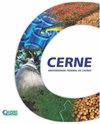Desiccation Tolerance and germination of Psidium guajava seeds from different regions of Brazil
IF 0.7
4区 农林科学
Q3 FORESTRY
引用次数: 0
Abstract
Background: The germination ecology of P. guajava seeds collected in two regions of Brazil was investigated aiming to (1) characterize the seed batches; (2) determine the best temperature for germination; and (3) assess variations in seed desiccation tolerance (DT). For each batch, we determined seed water content and initial germination. To evaluate temperature effects, we tested seed germination. After, we generated the imbibition curves for the two provenance. To evaluate the loss of DT, the seeds were left to germinate along different time intervals. We monitored water loss by regularly weighing the seeds until achieving stabilization, keeping them under these conditions for 72 hours. After drying, the seeds were pre-hydrated and submitted to the germination test. Results: We identified variations in physiological characteristics between the seeds from north and southeast batches. At the temperature extremes, the seeds from both provenance failed to germinate. The highest germination percentages were observed at 20 and 25 °C (constant) and between 20-30 °C (alternating) for the two batches and, for the southeast batch specifically, at 30 °C. The imbibition curve displayed a triphasic pattern with a rapid increase in seed fresh weight in the first 48 hours. Conclusion: The southeast provenance seeds lost DT abruptly, until its complete loss after radicle protrusion, which occurred in both batches. The highest values of germination speed index (GSI) of both provenance were observed after a 9-day imbibition period, suggesting seed hydration memory. Drying resulted in necrosis of the root tissue and death of the seeds with visible roots.巴西不同地区番石榴种子的干燥耐受性和萌发
背景:对巴西两个地区采集的瓜石榴籽种子的萌发生态学进行了研究,目的是:(1)对种子批次进行表征;(2)确定发芽的最佳温度;(3)评估种子干燥耐受性(DT)的变化。对于每批,我们测定了种子含水量和初始发芽率。为了评估温度的影响,我们测试了种子发芽。在此基础上,绘制了两种物源的渗吸曲线。为了评估DT损失,将种子放置在不同的时间间隔发芽。我们通过定期称重来监测水分流失,直到种子稳定,并在这些条件下放置72小时。干燥后,对种子进行预水化并进行发芽试验。结果:鉴定了东北批和东南批种子生理特性的差异。在极端温度下,两种来源的种子都无法发芽。在20和25°C(恒定)和20-30°C(交替)条件下,两个批次的发芽率最高,特别是东南批次的发芽率为30°C。吸胀曲线呈三相型,种子鲜重在前48 h内迅速增加。结论:东南种源种子DT丢失突然,直至胚根突出后完全丢失,两批均有发生。两个种源的萌发速度指数(GSI)均在吸胀期9 d后达到最高值,表明种子存在水化记忆。干燥导致根组织坏死,可见根的种子死亡。
本文章由计算机程序翻译,如有差异,请以英文原文为准。
求助全文
约1分钟内获得全文
求助全文
来源期刊

Cerne
农林科学-林学
CiteScore
1.60
自引率
0.00%
发文量
2
审稿时长
6-12 weeks
期刊介绍:
Cerne is a journal edited by the Federal University of Lavras, Minas Gerais state, Brazil, which quarterly publishes original articles that represent relevant contribution to Forestry Science development (Forest ecology, Forest Management, Silviculture, Technology of Forest Products).
 求助内容:
求助内容: 应助结果提醒方式:
应助结果提醒方式:


